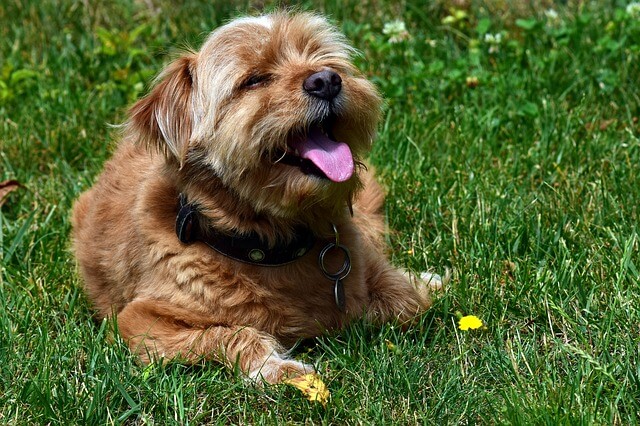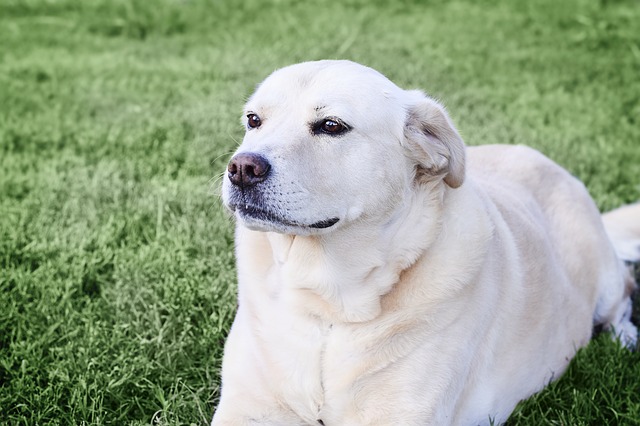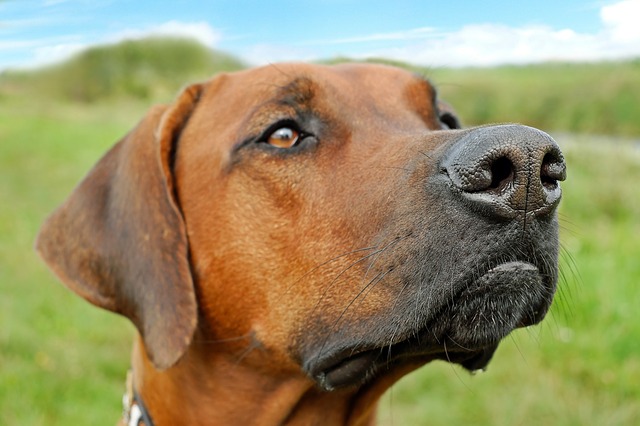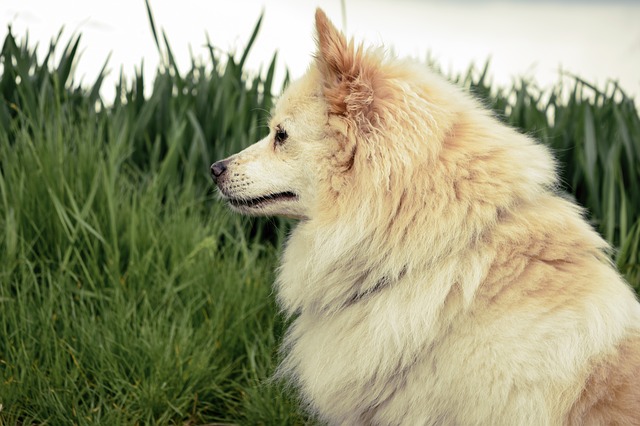When it comes to reading human facial expressions, there are a few set guidelines. Smiles are happy, frowns are sad, furrowed brows show worry, and blank stares are a sign of disinterest. But those rules don’t always apply to your dog.
Dogs are emotional animals that experience many of the same feelings people do, but expressing those feelings is a different story. There’s a disconnect between human and canine body language that sometimes sends false signals. Here are common canine facial expressions and what they mean.
#1 – Panting

There are several reasons why your dog could be panting. First, dog owners assume panting means their pup is happy because they usually do it during or after a fun play session. However, that open-mouth breathing isn’t a direct sign of pleasure. If you just finished a rousing game of fetch, they’re probably panting because they’re tired from running around. Yes, chasing a ball makes them happy, but that’s not why they’re panting. If your pup is panting when they’re simply sitting on the couch or walking through the house, take it as their way of showing stress. Stress panting is usually fast and shallow.
#2 – Strained Grin

Also confused with a sign of happiness, a strained “grin” on your dog is more likely related stress or discomfort than anything else. Look at your dog’s muzzle and take notice of any lines around their lips or leading up toward their eyes. These creases are your dog’s flexing facial muscles. It can sometimes result in an upturned look resembling a forced smile. Dogs that are sick and about to vomit often give this look, and it could also mean they’re anxious about something happening around them.
#3 – Relaxed Face

If your boss looks at you with a bland, expressionless face, it’s probably not a good thing. But if it’s your dog, it’s safe to say they’re content and relaxed. Dogs tend to show all their tension with their facial muscles, and a smooth face with no mouth lines or brow crinkles shows they’re perfectly calm. Their mouth could be loosely closed or slightly open, and their ears will be in a relaxed position. If your dog has naturally droopy eyes or sagging skin around their face, this look can sometimes make them appear sad or bored. Don’t take it personally, it’s most likely genetics that gives that “resting sad face.”
#3 – Closed Mouth With Alert Ears

Check for wrinkles around the muzzle to tell the difference between a relaxed closed mouth and an alert closed mouth. If a firm-set jaw is coupled with pricked forward ears, scan your surroundings for something attracting your dog’s attention. A dog that’s overly fixated on something will freeze their facial features as if they’re afraid to move. They’ll stay that way until the distraction either goes away or they decide to go after it. If you already know your dog has a high prey drive or is a flight risk, it’s your cue to hold the leash a little tighter. It may also be in your best interest to disengage your dog’s focus and take evasive action.
While you wish you could have long talks with your dog about their feelings, the best way to understand their emotions is to pay attention to their facial features and body language. A heavily panting dog looks adorably happy with their tongue lolling out of their mouth and their eyes bright and alert, but they could actually be sending you a message that something isn’t right. Take what you already know about your dog’s personality and think from their perspective to discern what’s going on in their mind.
